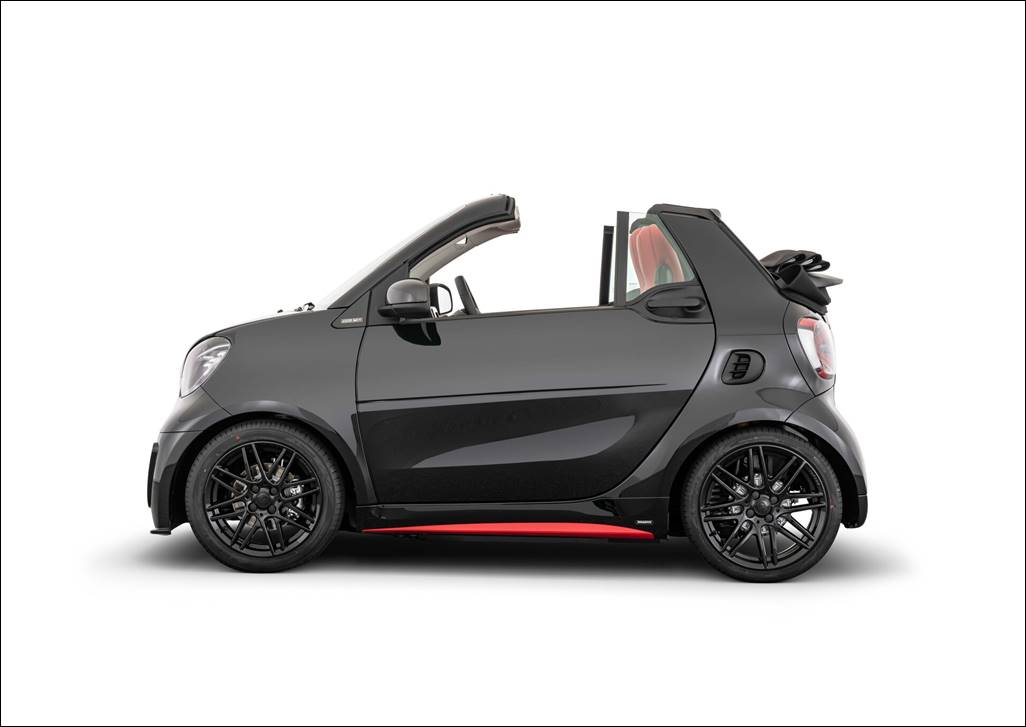BRABUS, a well established tuner, and smart, which began a unique citycar brand, may seem an odd couple with opposing objectives. The German tuner is well known for taking premium models (mainly Mercedes-Benz) and raising their performance to levels that can embarrass supercars. On the other hand, MCC smart was efficiency-focussed and ‘high performance’ for its cars have had a different meaning from BRABUS.
Nevertheless, even those who buy energy-efficient cars like sportiness and in the earlier years of smart’s history, BRABUS was commissioned to produce limited editions that added a sporty touch. Eventually, besides adding big wheels, a wider look and other cosmetic changes, BRABUS started to try to add more zip to the Fortwo – though there was only so much you could do with the Renault-based 1-litre 3-cylinder engine. Later, it also improved the output of the Mitsubishi 1-litre engine (3B2) used for the second generation.

It must have been an interesting challenge for the engineers though, having to work with the tall body which raised the centre of gravity and trying to make the little car worthy of the BRABUS badge. The BRABUS cars did have some distinctiveness but were largely just more expensive versions as the performance changes were not significant.

The association between the two companies goes back to the first generation of the smart fortwo in 2003 and in the first 10 years, over 50,000 fortwos (including cabriolet versions) were sold with BRABUS badges.
In 2019, when smart introduced its fully electric EQ, BRABUS also had an opportunity to develop its own version which it called the 92R. Using the cabriolet version, it developed what it referred to as an ‘electric pocket rocket’ and a revolutionary product for the company.

Weighing 1,160 kgs, it certainly needed little power to go very quickly. The standard smart powertrain produced 82 ps/160 Nm and BRABUS pushed it to 92 ps/180 Nm, with a top speed of 130 km/h. But the owner would have to accept that the 17.6 kWh battery would only give around 125 kms of range, so it would have to stay within city limits where there would be recharging points.
The 92R was like other BRABUS conversions with a lot of cosmetic alterations using the company’s own accessories. It was probably at this time that the BRABUS engineers gained insights into fully electric powertrains and looked at ways to improve performance in terms of output. Since then, they have also upgraded powertrains of the Mercedes EQ models, so they have been building up a lot of expertise.
The association between smart and BRABUS continues to this day with the new company that is jointly owned by Geely and Mercedes-Benz. With the totally new generation of models starting with the #1, there is also a performance version known as the smart #1 BRABUS.

This time round, it appears that BRABUS has had a bigger involvement and would have worked closely with Mercedes-Benz Design (which was responsible for the exterior and interior design work). At the same time, it would have had to work with Geely’s SEA platform though as mentioned earlier, it has already built up much expertise in electric powertrains.


Don’t be surprised if BRABUS decides to push further and come out with some super version with its own badge that can join its ROCKET range. In any case, those who worry that the driving will become boring in the electric age, BRABUS will make sure that it doesn’t.
